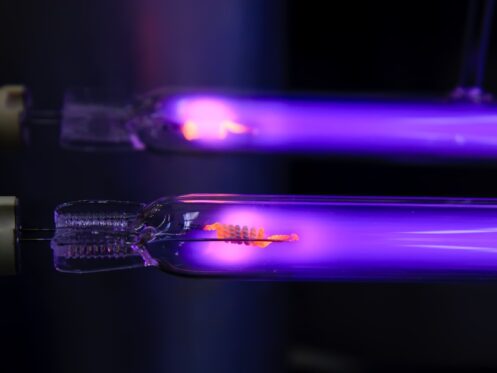Germs are a constant concern in every household, and finding reliable methods to combat them is crucial for maintaining a healthy living space. Amidst various cleaning methods, UV lights have gained attention for their potential germ-killing abilities. But do UV lights live up to the hype? Today, we’ll explore the world of UV light technology, evaluate its real-world effectiveness, and understand its limitations.
Understanding UV Light Technology
To grasp the potential of UV lights in germ eradication, it’s crucial to understand the different types of UV light and their characteristics. Ultraviolet light is categorized into three main types: UVA, UVB, and UVC. UVC, with wavelengths ranging from 100 to 280 nanometers (nm), is the most effective in killing germs. UV light’s germicidal properties stem from its ability to damage the genetic material (DNA) of microorganisms.
According to the International Ultraviolet Association, when UV light with a wavelength of 254 nm interacts with the DNA of a germ, it causes significant damage, disrupting replication and rendering about 99.99% of microorganisms unable to multiply or cause harm. Additionally, UV light can also break down proteins in the microorganism’s cellular structure, further compromising its viability. These combined effects make UV light a powerful tool for eliminating germs.
Evaluating the Effectiveness of UV Lights in Killing Germs
Scientific studies have extensively examined the effectiveness of UV lights in germ eradication, and one popular application of UV light technology in residential settings is the use of UV lamps in HVAC systems. UV lamps installed within HVAC systems are designed to sterilize the air as it circulates through the system, effectively targeting airborne pathogens. These lamps emit UVC light with a wavelength of 254 nm.
Debunking Myths and Addressing Concerns
As with any emerging technology, UV lights have garnered their fair share of myths and misconceptions. One common misconception is that UV lights are safe for human exposure. In reality, prolonged or direct exposure to UV light can cause skin and eye irritation, including burns and even long-term damage. It’s crucial to exercise caution and adhere to safety guidelines when using UV light devices.
Furthermore, UV lights have limitations when it comes to treating hidden or obstructed areas. Shadows or objects that block the direct path of UV light can reduce the effectiveness of the light in eliminating germs. It’s worth noting that while UV lights can be a valuable addition to your indoor air quality solutions, they should not be relied upon as the sole method of germ control. UV light sterilization should complement other cleaning practices, including regular handwashing, surface disinfection with appropriate cleansers, and maintaining overall cleanliness and hygiene.
Does UVC Reduce Odors?
UVC light has the potential to reduce odors through its germicidal properties. Odors can arise from various sources, including bacteria, fungi, and other organic matter. By disrupting the DNA and protein structures of these microorganisms, UVC light effectively eliminates them. As a result, there is a direct reduction in the presence of odor-causing compounds, leading to a noticeable decrease in the release of unpleasant odors.
Where Is the Best Place to Put UV Lights in the HVAC Unit?
UV lights are usually placed in two common locations: above the evaporator coil and in the return duct. Placing UV lights above the evaporator coil in an HVAC system is an effective way to combat microbial growth. This helps maintain a clean coil, optimizes airflow, improves cooling performance, and reduces unpleasant odors associated with biological growth.
Alternatively, installing UV lights in the return duct targets airborne contaminants before they reach the HVAC system. The return duct draws air from various areas of the building, which may contain germs, bacteria, viruses, and allergens. By placing UV lights in this location, the lights can neutralize or destroy these microorganisms, improving indoor air quality.
It’s also worth mentioning that the installation and maintenance of UV lamps in HVAC systems should be carried out by professionals to ensure optimal performance and safety. Proper sizing, placement, and periodic lamp replacement are essential for maintaining the effectiveness of UV lamps in killing germs.
Enjoy the Benefits of UV Lights Today!
Are you tired of worrying about germs, allergens, and stale air in your Omaha home? Say goodbye to those concerns by scheduling UV light installation with Xtreme Heating & Cooling LLC. Our expert team specializes in AC installation and repair, ductless mini split AC, heat pumps, smart thermostats, and air purifiers. We can also help you create a healthier, cleaner, and more comfortable indoor environment by harnessing the power of UV technology in your home or business in Omaha and the surrounding areas. Contact Xtreme Heating & Cooling LLC today to take the first step towards a fresher, safer space.
